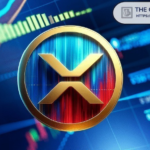Hash price has fallen to its lowest level since April, when Bitcoin was trading at around $76,000, and is currently at $43.1 per petahash per second (PH/s).
Hashprice, a term coined by Luxor, refers to the expected value of 1 terahash per second (TH/s) of hashpower per day, representing how much a miner can earn from a given amount of hashrate. Affected by Bitcoin price, network difficulty, block subsidies, and transaction fees.
Bitcoin has corrected about 20% from its all-time high in October to $104,000, and with transaction fees still at bear market levels, miners’ profits are under increasing pressure.
According to mempool.space, high-priority transactions currently cost around 4 sat/vB ($0.58) to process, but average transaction fees on an annual basis are at their lowest levels in years.
The hash rate, the total computational power used by miners to secure the Bitcoin network, remains just below its all-time high at more than 1.1 zetahashes per second (ZH/s).
This coincides with the recent difficulty adjustment reaching an all-time high of 156 Trillion (T), an increase of 6.3%.
Difficulty adjustments are readjusted approximately every two weeks to ensure that a new block is mined approximately every 10 minutes, maintaining network stability as mining power fluctuates.
Falling Bitcoin prices, low transaction fees, and record difficulty are all putting pressure on the profitability of Bitcoin mining.
As a result, Bitcoin miners are pivoting to AI and high performance computing (HPC) data center operations to ensure a more reliable source of revenue. By signing long-term contracts with data companies, miners can stabilize their cash flow and reduce their dependence on volatile Bitcoin market conditions.








